Are there any advantages to lining your kitchen cabinet shelves? Is it worthwhile to spend the time, effort, and money on it?
It’s not uncommon to wonder about the benefits and drawbacks of kitchen cabinet shelf liners. Are they worth the effort? In the past, I’ve pondered this question, omitted this crucial step, and then rectified it.
This is a frequently asked question, so explaining why you need shelf or drawer liners might be helpful to you, dear reader. Additionally, because I love cleaning and organizing hacks, I’ll show you some unique ways to use them and possibly even help you save money lining your kitchen shelves.
Kitchen shelf liners can provide many benefits, such as protecting the shelf from damage, adding a beautiful design element, and reducing noise, but they can be difficult to install, and may wear over time.
Lining kitchen cabinet shelves are about as enjoyable as it is watching grass grow. It’s right up there with organizing the dog food cans in my pantry. Trust me, that task has a point, but I digress.
It has previously been my practice to line shelves and drawers. This time-consuming process will test your patience.
Nevertheless, your cabinets, like those in most kitchens, are heavily used besides being mistreated. It is with a heavy heart that I apologize to the kitchen. I adore you and promise to do my best to treat you better in the future !).
So now I can teach you the benefit and drawbacks of kitchen cabinet shelf liners, including how to protect cabinets. Keep reading to learn more!
The Benefits And Drawbacks of Kitchen Cabinet Shelf Liners:
- A shelf liner helps to prevent water damage.
- A shelf liner protects cabinets from scratching.
- A shelf liner makes clean up easier.
- A shelf liner helps to reduce noise in your kitchen cabinets.
- A colored shelf liner helps to add some color to drab kitchen cabinets.
- Kitchen cabinet liners help small items from falling through.
- The shelf liner is extremely sticky.
- The kitchen cabinet liner isn’t sticky enough!
- Tiny holes that attract crumbs and tiny bits of trash.
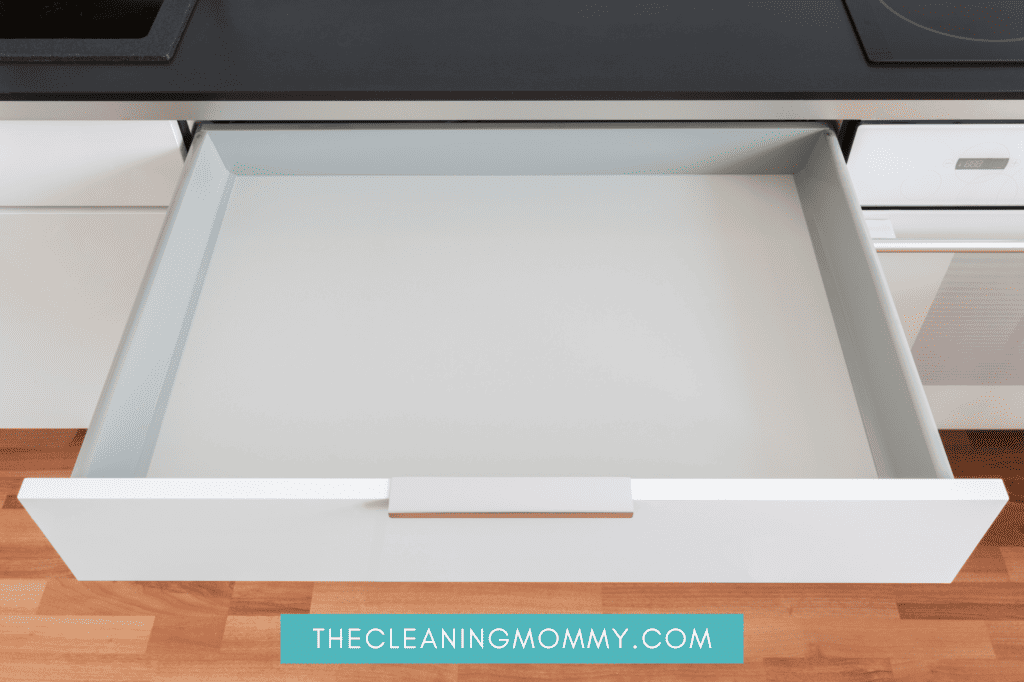
Advantages of Kitchen Cabinet Shelf Liners
The following reasons make kitchen cabinet shelf liners a worthwhile investment…
1) Water Damage Prevention
I’m going to be honest with you. Putting away wet dishes in kitchen cabinets is a habit my daughter has completely mastered. Although, I tell her to leave them to dry, she forgets and I started to see water stains! I was not happy as you can imagine!
Wet dishes leave water stains and rings on bare cabinet shelves that kitchen cabinet liners prevent. This water damage can lead to eventual rot and mold growth on wood surfaces, like kitchen shelves and drawers. (Be honest, how many times have you thrown wet forks and spoons in a drawer after doing the dishes and called it good? I know it’s not just me!)
Adding a shelf liner can make all the difference! You won’t have to worry about the inevitable water damage you’re subjecting your cabinets to or about gross mold and mildew secretly growing in your kitchen cabinets. Which can be difficult, if not downright impossible, to remove.
In the long run, investing in some kind of preventive liner for shelving is much cheaper than installing new cabinetry in your home. And less costly to your health and wallet than the issues mold spores can cause you and your family.
2) Protect Cabinets From Scratching
Kitchen cabinets are particularly damaged by certain types of cookware, such as pots and pans. Kitchen cupboards and dish cabinets are prone to scratches and dents caused by pulling those pots in and out.
Small appliances and cookware can leave nicks and scratches on cabinets if shelf liners are not used. These gouges in the wood aren’t a huge deal, but they can be an eyesore. Not to mention, it can actually devalue your kitchen quite a bit if the resell value of your home is important to you.
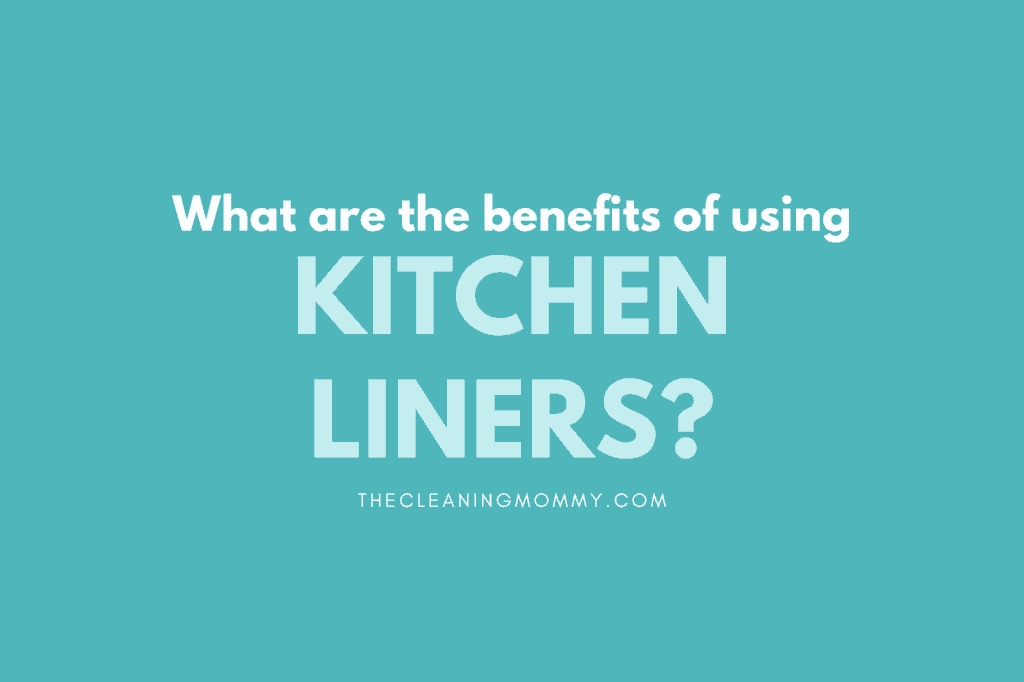
3) Using A Shelf Liner Makes Cleaning Easier
No special cleaning is required for lined cabinets (as with certain types of wood). Lined cabinets are easy to clean. Replacing the liner is far easier than cleaning the wood grain if the stain or debris is hard to remove!
We’ll have more information on cleaning cabinet liners further in this article, but the process is probably the easiest cleaning job you can do in your home.
4) Reduce Noise
I’m envious if you have soft-close hinges on your kitchen cabinets. I don’t, which means doors have to be closed carefully, so as not to disturb anyone during midnight snacking.
A second method is to add lightly cushioned liners to reduce noise. Because the clinking of those dishes and pots can give your snacking habits away in a heartbeat! I say that because we parents don’t always want to share the secret bag of Pizza Rolls hidden inside a container of vegetables in the freezer.
Kitchen cabinet liners will make the sound of pots being slammed and dishes scraping together less noticeable. In addition, textured liners prevent drawer organizers (particularly silverware ones!) from sliding around and creaking! Because, again…the children can always hear you rustling up a bowl of ice cream after bedtime.
7) Adds Color
A subtle way to incorporate color and pattern into the kitchen cabinet is to use colorful liners. Your house will look great with this simple and inexpensive addition.
There are colorful liners in an endless number of styles to choose from, so there is always something that will work with your design style.
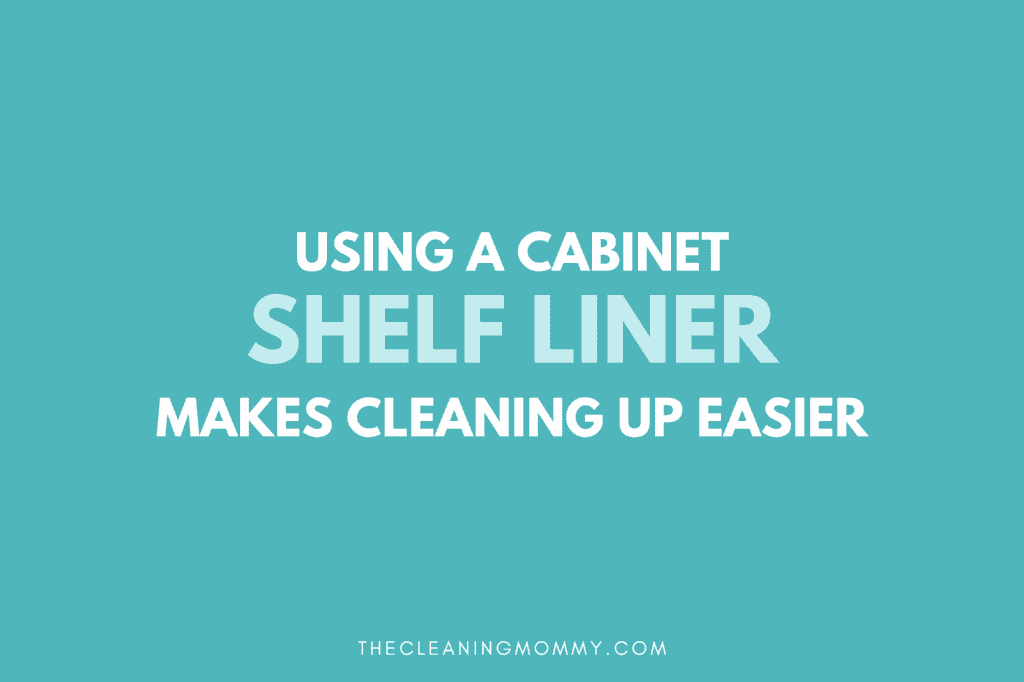
8) Keeps Small Items From Disappearing
Open shelving or even wire shelving may look attractive, but it is undoubtedly inconvenient. Using a liner prevents tiny objects from falling through and ending wherever they end up on the journey to their new home, usually under small appliances.
The Drawbacks of Kitchen Cabinet Shelf Liners
It is true that the benefits of kitchen cabinet shelf liners listed above are compelling. Lined shelves and drawers in your kitchen cabinets might be a good idea. However, there are some notable downsides.
1) The Liner Is Extremely Sticky
When I think about kitchen cabinet shelves and shelf liners, I remember my grandmother’s super sticky contact paper. Installing wrinkle-free requires a steady hand, according to my experience.
Cuts should be made with a very straight hand to fit the edges of shelves and drawers.
In addition to being water-resistant, contact paper is also long-lasting. I’ve been similar adhesive shelf liner materials for a few years, and it works flawlessly.
There is an excruciating amount of pain and aggravation involved in the removal procedure for contact paper, however. It’s a matter of scrubbing and excavating.
Contact paper is designed to protect your kitchen shelves from damage – exactly what the act of peeling it away does! Luckily, contact paper increases the kitchen cabinet shelf life, so it’s still beneficial.
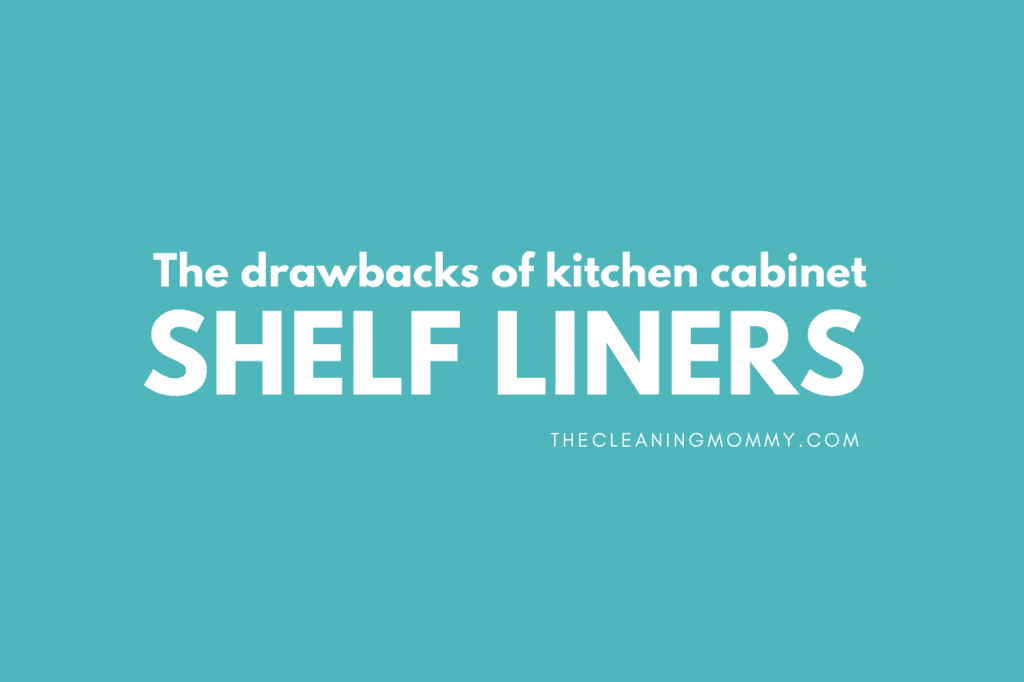
2) Inadequate Stickiness
The “light” tackiness of most contact paper substitutes prevents the annoyance of removal. The concept seems great, but…I couldn’t find a highly-rated shelf liner for staying in place.
It appears that most of the issues in the evaluations relate to shelves containing bigger items, such as pots and pans and small appliances. They are, however, the shelves that need the most protection with kitchen cabinet liners.
However, the best-reviewed liners are a bit pricey. Your kitchen will quickly become expensive if you line every kitchen cabinet shelf and drawer.
3) The Holes
The “waffle” kind of shelf liner suffers from this disadvantage. I don’t love this type of liner. There are now shelves in many basements and storage areas displaying these, which is a better use than in the kitchen.
Since there are gaps in the waffle design, crumbs, dirt, and other debris end up on the wood surface beneath. Complete disclosure; a gross mess can be waiting for you!
4) Color Fading
The liners’ benefit of adding color (as mentioned above) may also be a disadvantage. If you are remodeling your kitchen cabinets or drawers, you might want to consider lining them with gorgeous multi-colored contact paper.
But what if several years later, you find out that there is a trendy new paint color you must have in your kitchen? Your heart might be set on a new dish set. However, does it match the contact paper’s design and color?
Do Shelf Liners Help Kitchen Cabinets Last Longer?
You may have noticed that I did not mention that shelf liners can extend the functional life of kitchen cabinets as well.
The majority of homeowners do not replace their kitchen cabinets because of shelf liners, despite the fact that they help keep shelves cleaner and more hygienic. The scratches caused by pots, pans, and dishes usually aren’t that severe. But then again, I’m in the cleaning business, not the cabinet business.
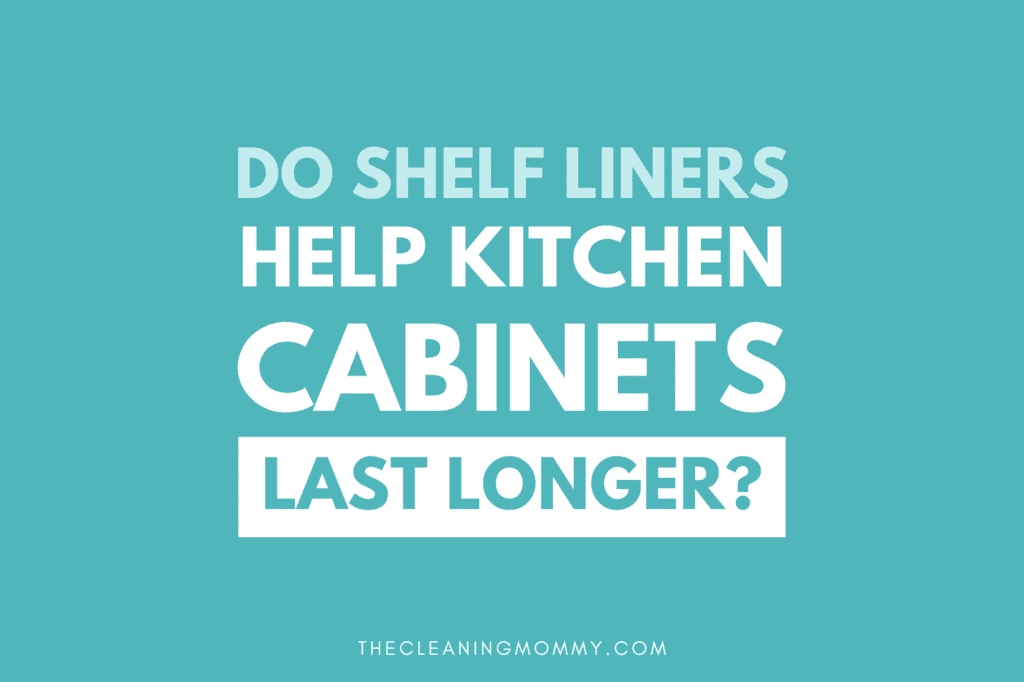
A Few Tips for Getting the Most out of Your Shelf Liner
Take the time to clean out your kitchen cabinets. Make it a habit to clean your kitchen cabinet annually, even if it is unpleasant. If you declutter, you may even find ample cabinet space you were missing!
Waffles should be omitted. I used to love this, but I have decided to trade it in for something without holes. Due to the holes in the surface, debris and crumbs will collect beneath the surface.
In addition, it is not always non-slip, as it may bunch up and move when you place or remove items. In addition, a plastic liner like this is more difficult to keep clean.
Select a product that will last for a long time. Using removable reusable mounting putty, cut vinyl flooring to fit inside and line drawers and cabinets. Due to their greater durable nature as liners, you will never need to replace them!
Don’t include anything that is sticky. It is unlikely that the glue itself will damage your shelves; however, peeling it off may do so. When removing the protective covering, your shelves will be scratched and dented. What is the point of safeguarding your shelves?
Make sure that the kitchen cabinet liners you choose have a low tack, or opt for a non-adhesive shelf liner instead.
Take cedar into consideration. Because of their natural repellent properties, natural cedar liners are useful for storing spices, dry goods, or kitchen linens where moths and other insects may be a problem. Natural cedar liners will also last a long time.
Cork is an option. The porous surface of cork, which comes in rolls many feet long, provides a cushion for fragile items, including glassware. As well as being mold and mildew-resistant, it is also durable as a shelf liner.
Keep Your Liner From Sliding
In order to prevent the liner from slipping, apply a small amount of reusable mounting putty to each corner of shelves and drawers.
You may wish to consider installing an under-the-sink mat (usually meant for your kitchen sink). Added bonus: in addition to being able to absorb spills more effectively, many of them are dishwasher safe as well, or just throw it in the sink for a scrub.
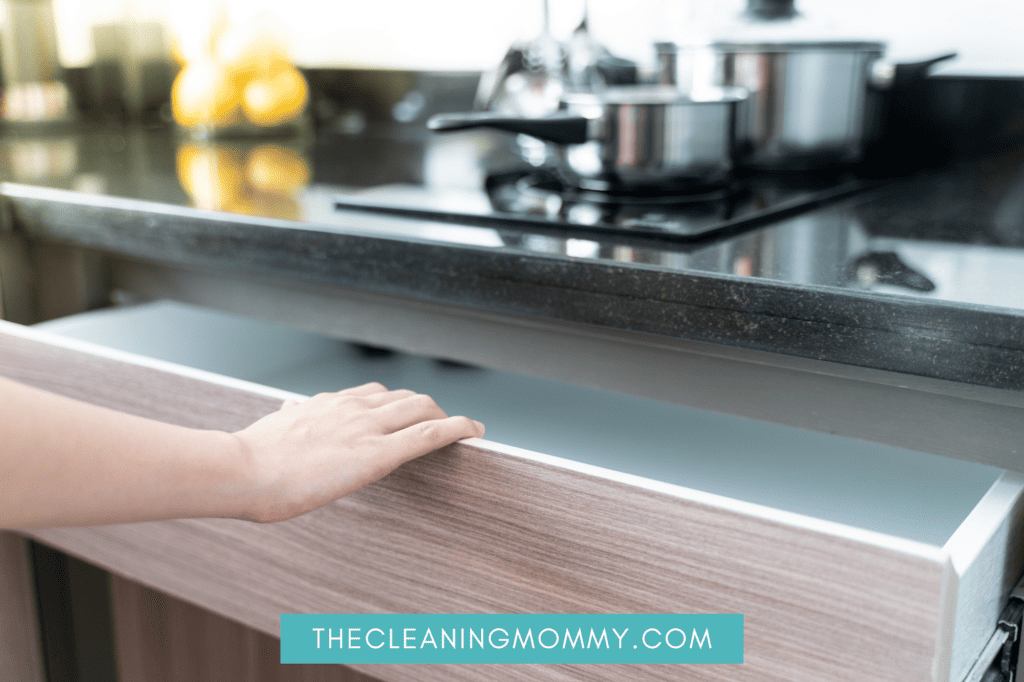
Frequently Asked Questions
Can I use kitchen cabinet shelf liners in dresser drawers?
Yes! Shelves and drawers in your closet and dresser will benefit from a liner. Especially if you have wood furniture that isn’t finished or may be leaving traces of wood chips on your clothes.
You can also add a liner to your sink drawer or vanity drawer as well. A simple liner will keep any shelf or drawer contents neat and tidy.
How do I clean kitchen cabinet shelf liners?
If you’re using silicone liners, you can throw these in the dishwasher easily. But traditional sticky liners will last longer with an occasional wipe-down.
Use a slightly damp cloth to wipe down the liner, being careful not to saturate the shelf with water. This can cause the contact paper (if that’s the route you chose) to become damaged and may even begin shredding. Wipe after with a dry cloth to absorb any water residue or excess moisture.
A bleach wipe (like the Clorox brand) is also great for cleaning a shelf liner. Just be sure to squeeze the bleach wipe first before applying, as sometimes they can absorb too much cleaning solution when pulled from the container.
Maintaining your shelf liner and any drawer liner will keep the liner in great shape for a few years to come. Until your next upgrade, a year or two down the line.
Other Cleaning Articles You May Like:
- How to keep countertops clutter free.
- Guide to cleaning kitchen tiles.
- Keeping a clutter free home
- Household items you are forgetting to replace
- How to clean fire extinguisher residue
- How to get rid of smell in fridge
- Get rid of these items in your home

Grainne Foley
Grainne Foley is a wife and mother of 2 great kids. During her 5 years of full time RV travel, Grainne learned to become very efficient at household chores, in order to make time for family adventures. Now, back in a house, she has continued to create tools and techniques to help others lighten the load of household organization and cleaning.
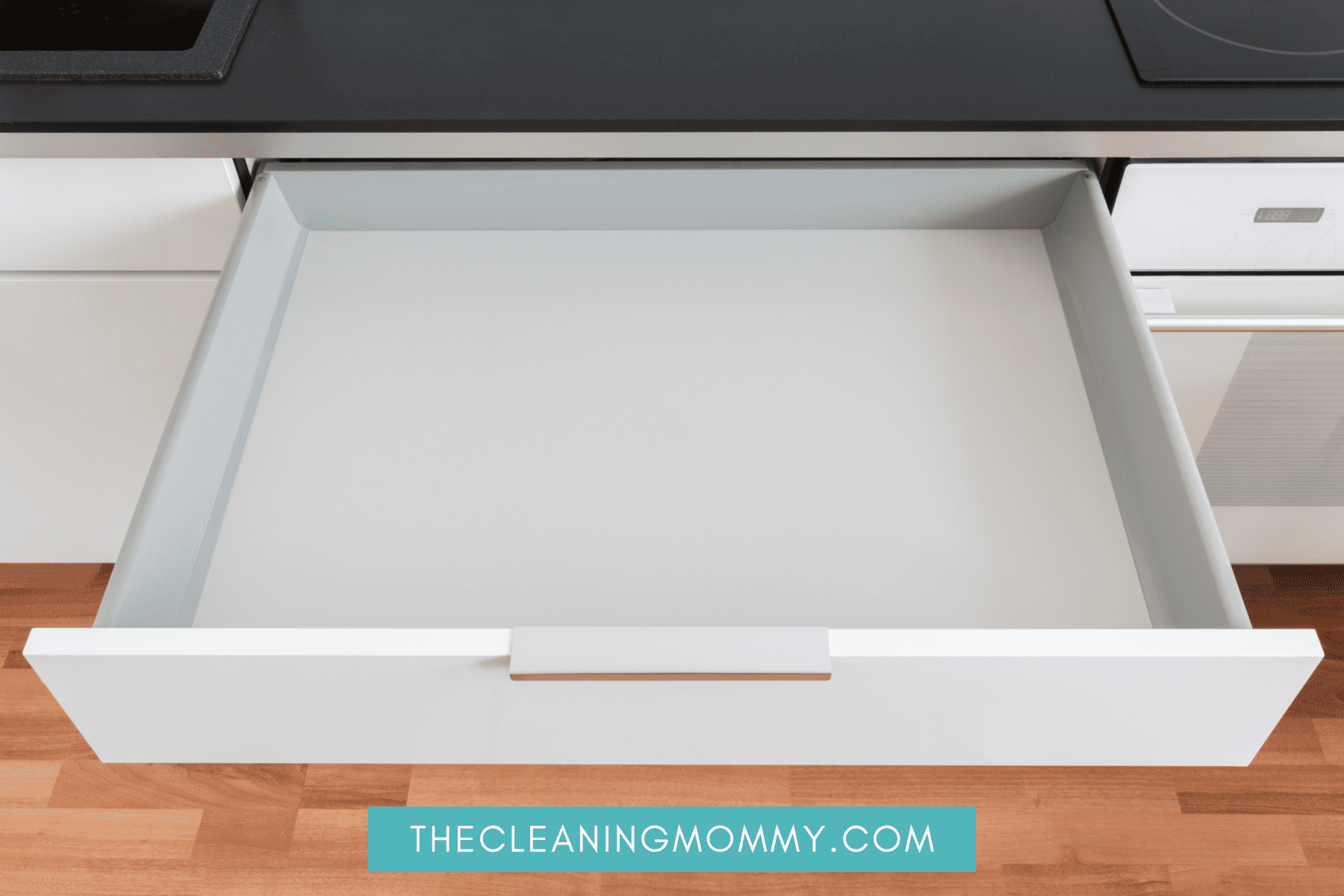
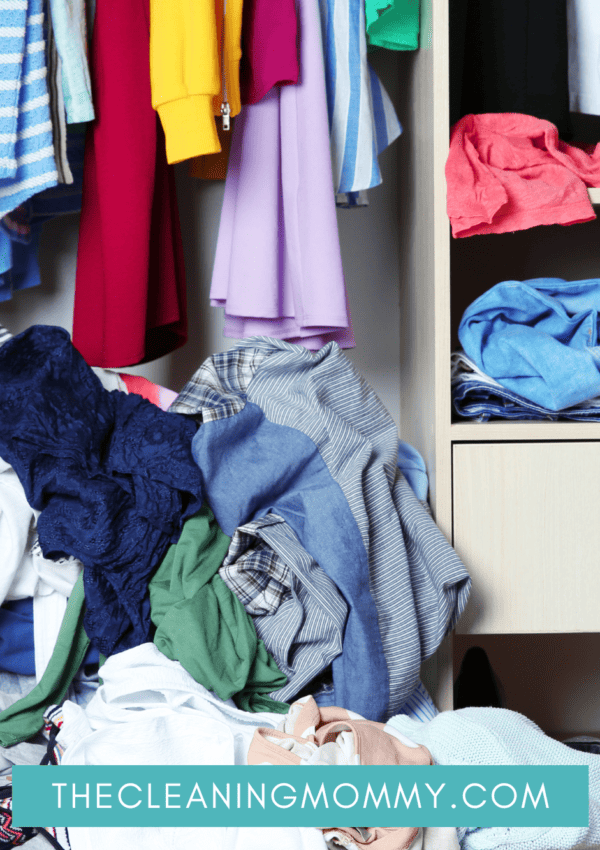


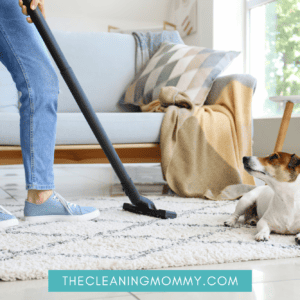
Leave a Reply